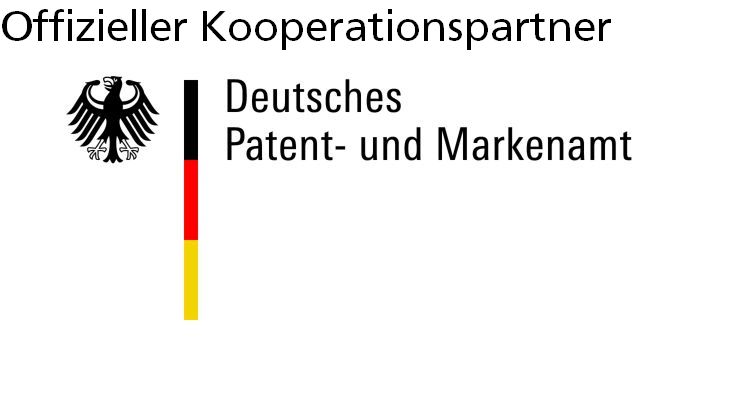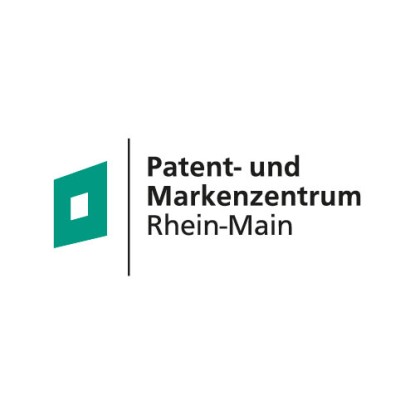Patent – Trade Mark – Design
What must you do to ensure that you can retain control of a product, business or advertising idea, an app or a new solution resulting from your scientific work? You have probably heard something about the protection of patents, utility models, trade marks and designs but don’t know how it works.
You can find answers to these and other questions as part of our consultation service on IP strategy for beginners. You will get a thorough insight into what IP rights can protect, information on costs incurred when filing for national and international protection and details of the various ways to achieve effective protection.
As part of your conversation with us, you can also arrange a patent, trade mark or design search on your topic and agree a corresponding follow-up appointment. This gives you valuable information immediately to help you prepare your application as well as possible.
For you as an inventor, getting the right information about patents is more important than ever. After all, good research and development results lead to new and perhaps successful products. Increasingly, however, appropriate protection for technical innovations is neglected: before you know it, the results you have worked hard to achieve end up in the hands of others as a consequence. Your unprotected developments can then be copied and produced by others.
The Patent and Trademark Centre Rhine-Main offers you a wide range of tools for utilising information on patent, trade mark and design protection. By using professional databases, the Patent and Trademark Centre can give targeted support to private or commercial inventors searching for existing IP rights.
For you, a granted patent signifies an economic monopoly on use or the right to prohibit use for up to 20 years. In return, the Patent Act stipulates that your technical invention must be published. This means that your technical knowledge is available to the general public for the research into and development of new products. As the patent owner, however, you retain the right to commercial exploitation. Patent literature is therefore a rich source of information when it comes to finding solutions to technical problems.
Our patent attorneys are on hand to help with drafting patents and advising on legal matters. Furthermore, the Patent and Trademark Centre Rhine-Main and the Chambers of Commerce (IHKs) offer regular inventor consultations covering law-related issues.
The picture is similar with regard to trade marks. Whether it’s an original advertising slogan, catchy product or company name or a sophisticated logo design: for each segment, we offer you core strategies to enable you to differentiate yourself from the competition as a company or start-up and to be visible to the customer. Protection of your good name has become a vital commodity in today’s service economy. This protection can be maintained for an unlimited period – the appropriate information required to achieve this, however, is generally not available without expert help.
A further property right – design protection – can also be granted to protect the specific appearance of your product. This is an important opportunity for all creatives to put counterfeiters in their place. Protection can be maintained for a maximum of 25 years.
Why should you apply for protection for your invention?
IP rights should grant you as an inventor a (usually temporary) monopoly on use of your creative achievement. If you were to waive protection of your intellectual property, any third party would be able to copy your invention and bring it to market themselves. Your investment in its development would then have been in vain.
Whether it makes sense to file an official application depends on the specific circumstances:
Is your invention part of a product or process?
Can the invention be identified by dismantling the product?
Does your application contain information which you ought to have kept secret?
Are you able to make provision for maintaining secrecy?
What is the situation regarding filings among competitors?
Will it be at all possible for you to subsequently enforce the patent?
How important is an infringement by competitors?
Should you not apply for protection, the following options are available to you for deterring the competition from copying your product directly:
Secrecy: Here, everything depends on the possibility of keeping know-how hidden. You must therefore give careful consideration to organisational measures within the company.
Using your technical advantage: In this case, you are temporarily in a unique position in terms of a specific product. You will be compelled to develop it continuously, however, if you wish to maintain your competitive advantage.
If you decide to apply for protection, you can proceed in various ways:
For technical inventions, register a patent or utility model.
For the appearance of a product, register a design.
For signs for distinguishing a product or service, a trade mark application is an option.
If your invention includes both technical and design elements which are new, you can naturally apply for several different IP rights at the same time.
Protection – and with it a monopoly on manufacture and sale – is only granted for the country in which you applied for this protection. An application submitted in Germany is therefore only valid in Germany.
Assessment of own IP rights
Working cost effectively requires constant assessment of the costs and benefits of various activities. Patents, trade marks and protected designs are no exception in this regard. Registering and maintaining IP rights entails a range of costs, such as registration, verification and maintenance fees, fees for attorneys and translation costs. These costs should be compared with the actual and expected revenue from the respective IP right.
The revenue aspect is targeted at the future and is often not easy to assess. Three other factors should also form part of the overall assessment:
• Law: What is the legal status of the application and, where applicable, how long will it remain valid? How does it compare with other applications of your own or of your competitors in terms of protectability? Is the content of your application robust or is it open to challenge? What about the enforceability of the IP right in practice? Does protection extend to only one or to multiple countries? Freedom to Operate (FTO) analyses can help here to assess scope for action.
• Technology: How does the innovation rate with regard to technology or product life cycles? Is it more of a basic technical discovery currently experiencing a boom? Or are the best days of this technology already over?
• Business: What is the situation regarding market acceptance? How much market potential does the innovation offer? How realistic is the development of the market?
In the case of large patent portfolios, advanced management methods are therefore applied in order to be able to handle the assessment of multiple IP rights if necessary. Where only a small number of patents, trade marks and protected designs are involved, these methods are often clearly too costly and time-consuming. More qualitatively oriented evaluation procedures can then help to implement more structured portfolio management for SMEs. These should of course be performed on a standardised basis.
These methods of IP rights assessment therefore enable economically sound decisions to be made on the maintenance, surrender or cancellation of an IP right. SMEs are frequently only offered the two options: to continue or relinquish protection. Licensing or sale may also be attractive options if suitable non-competing interested parties exist.
The first step is to review a company’s existing IP rights. Applications are frequently handled in collaboration with external service providers. Knowledge of the IP situation within a company is therefore often incomplete. This includes both the portfolio of IP rights held and the basic knowledge of the function, procedures and costs of property rights.
It is often not clear that the assessment of an IP right is governed to a large extent by definition (e.g. basic application or follow-up patent), status, term, family, own portfolio in the field, rival portfolios in the field and similar factors.
You can obtain a clear overview of such a review, including a report on the factors mentioned above, from the Patent and Trade Mark Centre (PMZ). For how to easily establish basic know-how in your company, please take a look at our low-cost, flexible in-house training courses.
Following the review and initial determination of opportunities and the competitive situation with regard to the IP rights held, the next step is to determine future commercial prospects in more detail. The innovation must be assessed in the context of technical and economic data.
The European Patent Office provides a guide to such an assessment with its free Ipscore® tool.
https://www.epo.org/de/searching-for-patents/business/ipscore
This tool can be used to evaluate patents and technological development projects. It provides both qualitative and quantitative evaluation in the form of a financial forecast showing the net present value of the evaluated technology.
We’re happy to provide you with further information.
What must you consider when it comes to exploiting your IP right and who can you turn to for advice?
When you have applied for protection for an invention and do not operate your own production facilities, the question naturally arises as to how you will make your innovation public and, at the same time, receive fair reward for your creative efforts.
The following options for utilising a property right are available:
Licensing: As the inventor and owner of the IP right, search for a company which can take the task of producing and launching a product off your hands. You then conclude a licensing agreement with the interested company. Depending on the agreement you reach, this company generally bears full responsibility for commercial success. Alongside exclusive licences granting the partner company exclusive exploitation rights, there are also licensing agreements limited to specific markets, industries or market segments. Ultimately this is all a matter of negotiation – as is the price. We therefore advise you to enlist outside help in preparing such discussions.
Own exploitation: Do you have the necessary expertise and access to financial and technical resources? Have independent consultants rated your chances for marketing your own product positively? In that case, you can set about exploiting your invention yourself. As a founder, you can claim valuable support and advice from a number of institutions. When choosing your adviser, however, you should be mindful of their independence because such support services do not release you from your obligation to plan carefully.
Patent exploitation is not the primary objective of the Patent and Trademark Centre. For this reason, we would like to refer you without obligation to a number of other institutions with particular expertise in patent exploitation.
Founders can contact the following regional partners:
- Kompetenznetz Gründungsberatung Südhessen
- IHK Darmstadt
- Handwerkskammer Rhein-Main
- • Many universities offer their affiliates points of contact for questions relating to start-up projects – e.g. HIGHEST the start-up centre at the TU Darmstadt.



